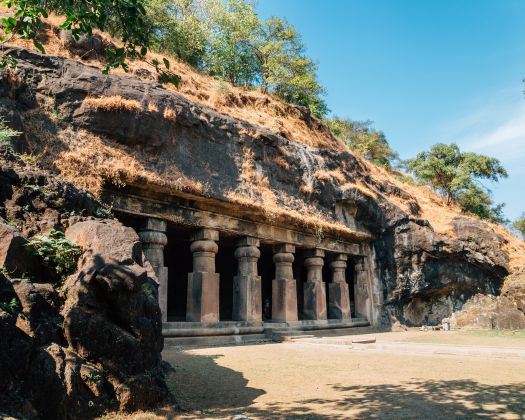Exploring the Marvels: 10 Amazing Facts about Elephanta Caves in Mumbai, India
Discovering the rich history and cultural significance of Elephanta Caves is like stepping back in time. Nestled on the Elephanta Islands in Mumbai Harbour, these Hindu cave temples dedicated to Lord Shiva boast a tapestry of stories and architectural wonders. Let's delve into the enchanting world of Elephanta Caves with these ten amazing facts, each adding a layer to the historical allure of this UNESCO World Heritage Site.
- Under the Watchful Eyes of Archaeological Survey of India
The Elephanta Caves are not just a relic of the past; they are actively under the observation of the Archaeological Survey of India. This ongoing scrutiny aims to unearth additional features and details, ensuring a comprehensive understanding of the medieval temples and enriching our historical knowledge.
- Lord Shiva's Diverse Depictions
Within the cavernous walls of Elephanta Caves, various sculptures beautifully depict Lord Shiva in different forms. From Yogisvara, the lord of yogis, to Shiva Nataraja, the cosmic dancer with many arms, these sculptures reveal the ancient Elephanta residents' deep reverence for religion and their artistic prowess in portraying the multifaceted manifestations of Lord Shiva.
- A Dance Festival Extravaganza
Every February, Elephanta Island comes alive with rhythmic beats and graceful movements during the Elephanta Festival. This two-day celebration of dance and music, initiated in 1989, attracts tourists from far and wide. Organized by the Maharashtra Tourism Development Corporation, the festival serves as a vibrant platform to showcase India's rich heritage and cultural diversity.
- Brahmanical Architecture in Cave 1
Among the caves on the island, Cave 1 stands out with its remarkable Brahmanical rock-cut architecture. This distinctive style, commonly employed by Hindus in building temples and monasteries, contributes to the visual grandeur of Elephanta Caves. The similarities in architectural elements between Buddhist and Hindu temples on the island highlight the coexistence of diverse belief systems.
- The Principal Sculpture: Trimurti Sadasiva
At the heart of Elephanta Caves lies the principal sculpture, Trimurti Sadasiva. This awe-inspiring 20-feet creation portrays a three-headed god representing the five-headed Shiva. Flanked by Ardhanarisvara and Gangadhara, the sculpture weaves a narrative rich in religious symbolism. These iconic sculptures are focal points for Hindus, drawing deep religious significance from their intricate details.
- Seven Cave Excavations
Elephanta Island is home to seven cave temples, each with its unique story. The two oldest temples, situated on the eastern side in the village of Mora, are complemented by a village of Buddhist stupa mounds. Unfortunately, destruction marred some of these caves, with the Portuguese allegedly using them for target practice in the 17th century. Nevertheless, restoration efforts have turned the island into a major tourist destination.
- Legend of the Warrior Prince: Pulakesin
Legend has it that the grand Lord Shiva temple at Elephanta Caves was built by Pulakesin, a warrior prince from the Chalukya Dynasty, to commemorate a significant victory. While the authenticity of this legend remains unconfirmed, the solid rock construction of the caves adds a historical mystique that captivates history enthusiasts.
- The Temple Complex Spans 60,000 Square Feet
The sprawling temple complex on Elephanta Island covers an impressive 60,000 square feet. With two lateral enclosures, subsidiary shrines, and courtyards, the main enclosure stands as a testament to the rich mythologies of both Indian and Buddhist cultures. The coexistence of these two philosophies within a shared space emphasizes the message of harmony and acceptance.
- Formerly Known as Gharapuri Island
Before adopting its current name, Elephanta Island was known as Gharapuri Island. The Portuguese, upon their exploration of the Arabian Sea, encountered a large stone resembling an elephant, leading to the island's renaming. This historical tidbit adds an element of intrigue to the island's identity.
- UNESCO World Heritage Site Recognition
In 1987, Elephanta Caves earned the prestigious title of a UNESCO World Heritage Site. This recognition stems from the site's rich historical tapestry and remarkable architectural design. The preservation of the archaeological components in their natural setting adds an authentic touch, making Elephanta Caves a truly deserving addition to the list of world heritage sites.
Exploring Elephanta Caves is not just a journey through ancient sculptures; it's a passage through time, culture, and the intertwining threads of history that continue to captivate visitors from around the globe.









